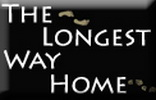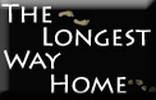About Chiang Mai
Chiang Mai is located in Northern Thailand about 688km from Bangkok at a slight elevation of 317 m it has a cooler climate than the south.

With a population of just 180,000 in the city and 1 million in the region Chiang Mai is less densely populated than the capital.
With a cooler climate, less people, rich history and plenty to see around the area Chiang Mai is one of Thailand's most popular destinations to visit.```
Must see hightlights of Chiang Mai
- Enjoy the peace & tranqulity of Chiang Mai's old city
- Visit one of the many Wats around Chiang Mai
- Eat out at one of Chiang Mai's excellent local restraunts
- Take a day trip out to a hilltribe village
- Go trekking in the mountains around Chiang Mai
- Go on a night walk to Chiang Mai's night bazaar
- Take a tour of the "Golden Triangle" in Northern Thailand
- Visit Wat Phra That Doi Suthep which overlooks Chiang Mai city on a hill
Get to know Chiang Mai city
For most visitors to Chiang Mai there are really only two parts of the city to know. The old city (walled in city) and the new city.
The old walled in city is by far the most popular area to visit with accommodation, temples and restaurants galore. While the new city contains the major transport hubs, shopping centers and commercial districts.
The vast majority of people arriving into the new city either using the international airport, the train station or the bus station. From these locations it's only a couple of kilometers to the old city.
One thing to note in both parts of the city is the lack of taxis. Most people either take tuk-tuks (private or shared) or one of the city's red songthews to get around. More on transport later on. But if you arrive and are stuck just hail a tuk-tuk rather than wait for a taxi like in Bangkok.
If you are staying near or within the walled city the good news is that most places of interest are walkable and easy to find. With Chiang Mai's cooler temperatures it's also not such a strain to get around.
Chiang Mai's new city
Chiang Mai's new city has grown out from the old walled city over the past few centuries. For many visitors there's not much of a reason to visit the new city other than for accommodation, the odd market and for transport hubs.
Highlights of Chiang Mai's new city include:
- The Silver Temple
- Wat Phra That Doi Suthep
- Night Bazaar
- Tha Phae Road (Wat Bupharam)
Chiang Mai's old (walled) city
Chiang Mai's old city is a treasure trove of activities, culture, sights, cafes, restaurants, experiences and the start of many a day trip. Surrounded by a square 1.5 km ruined wall and moat it's relatively easy to get your bearings.

Most people can easily spend a full day or two simply walking about the pleasant old city visiting ancient temples, tasting street food, taking in a massage or enjoying a coffee in a monk retreat.
Highlights of Chiang Mai's old city include:
- Wat Chedi Luang
- Wat Phra Singh
- Tha Phae Gate
- Several Market Streets
- Street food
- Cafes & restaurants
- Cookery schools
- Massage & beauty spas
- Arranging out of city activities
Getting to/from Chiang Mai
There are several ways to reach Chiang Mai from around the country and internationally.

Plane:
Chiang Mai has a small international airport (CNX). Most flights are regional and the majority are domestic. Thai Airways, Air Asia, Bangkok Airways, and Nok Air all have daily flights. Bangkok to Chiang Mai is the most popular route which takes about 1.5 hours. If flying from Bangkok do note that some flights depart and arrive from Don Mueang (DMK) airport and not Suvarnabhumi Airport (BKK). Chiang Mai's airport is only about a 10-minute taxi ride into the city.
Bus:
There are national services that run throughout the day and night to Chiang Mai. Government buses along with private buses (VIP, luxury) are the main options. The trip from Bangkok takes about 12 hours. Do note that Government buses are the cheapest at about 300 baht and depart from Bangkok’s Northern Bus Terminal (Mo Chit) but do make many stops along the way. Private buses depart from various stops around Bangkok including Hua Lamphong railway stations and Khao San road. Buses arrive and depart from Chiang Mai’s Arcade Bus Station.
Train:
One of the most popular ways to reach Chiang Mai is via Thailand's extensive railway network. Six trains a day depart from Hua Lamphong in Bangkok. Most depart in the very early morning or in the evening on overnight trains. There are three classes of carriage. 3rd class which are just seats. 2nd class which have air-conditioning and sleeping areas for overnights. 1st class which have dedicated cabins.
Drive:
An international license and insurance is required to drive in Thailand. It's not so cheap either. Unless you are comfortable with Thai style driving then accidents can happen.
Do read this full guide on how to get to Chiang Mai.
Getting around Chiang Mai
Unlike Bangkok, Chiang Mai does not have an extensive taxi network. There are official taxis from the airport but after that they are rare to come by. There are however other options.
Songthew:
Red pickup trucks are Chiang Mai's official version of a taxi. Simply flag one down and say the same of your destination to the driver. They will either nod and let you on board or shake their head and drive on. Destinations are written in Thai but most Songthews cover inner and outer city routes. If the Songthew is empty then they'll likely agree to wherever you want to go so it's important to ask the price before getting in.
Tuk Tuk:
Motorised Tuk Tuks (three-wheeled vehicles) frequent Chiang Mai's streets. Most are used for short distances. It's important to negotiate a price before getting in.
Taxi:
Taxis are rare in Chiang Mai but hotels can often call one for you. They have meters and you should ensure they are switched on.
Grab:
South East Asia's version of Uber is popular in Chiang Mai. You'll need to download the app to your phone and have a local sim. Grab are generally 15% cheaper than a taxi on average.
Please note it is expected that all passengers on public transport wear facemasks.


